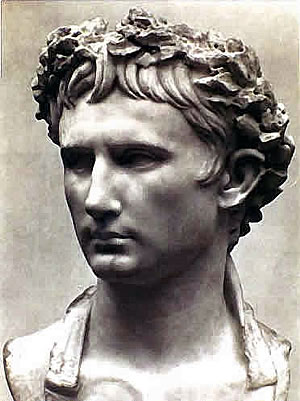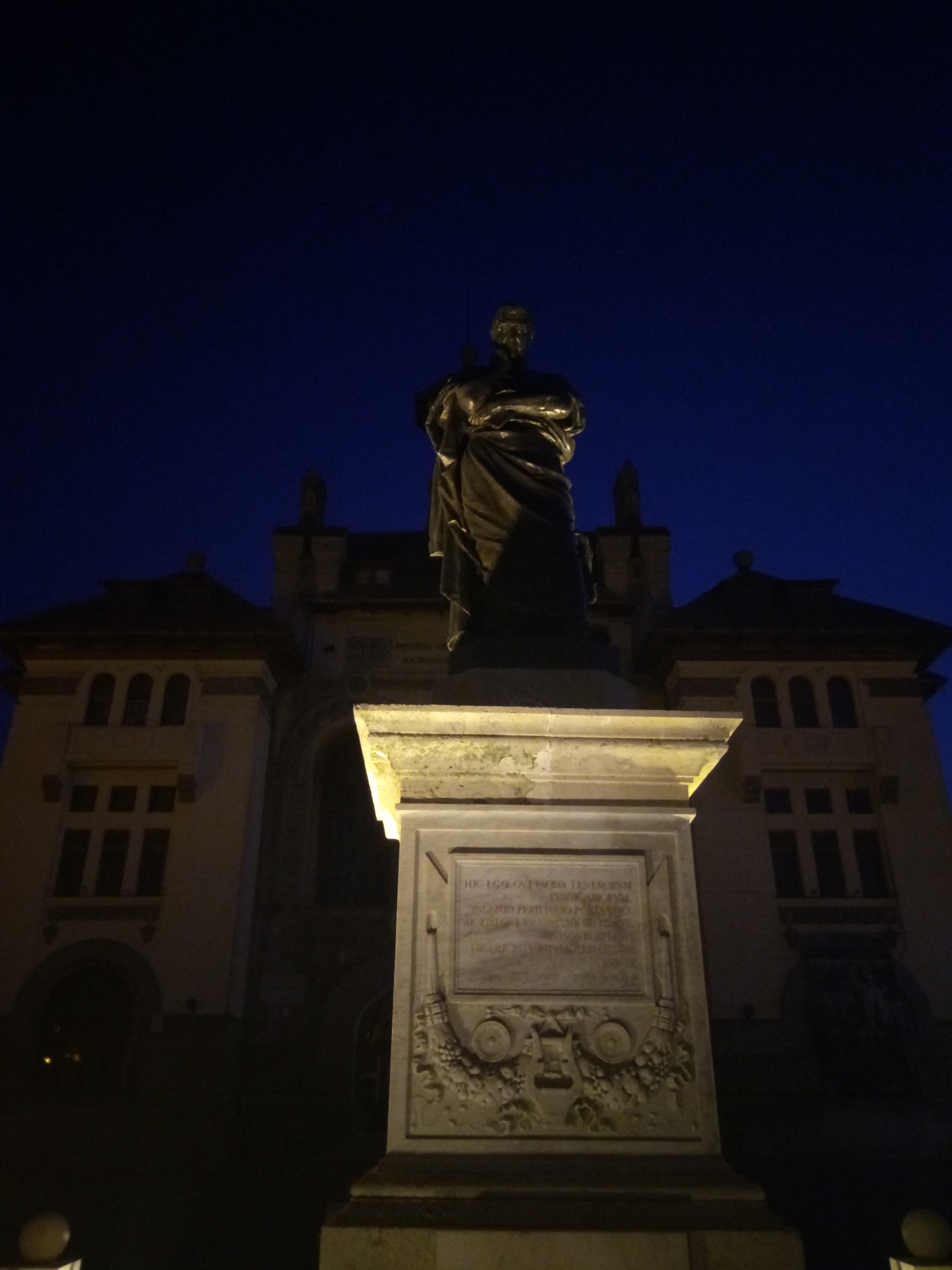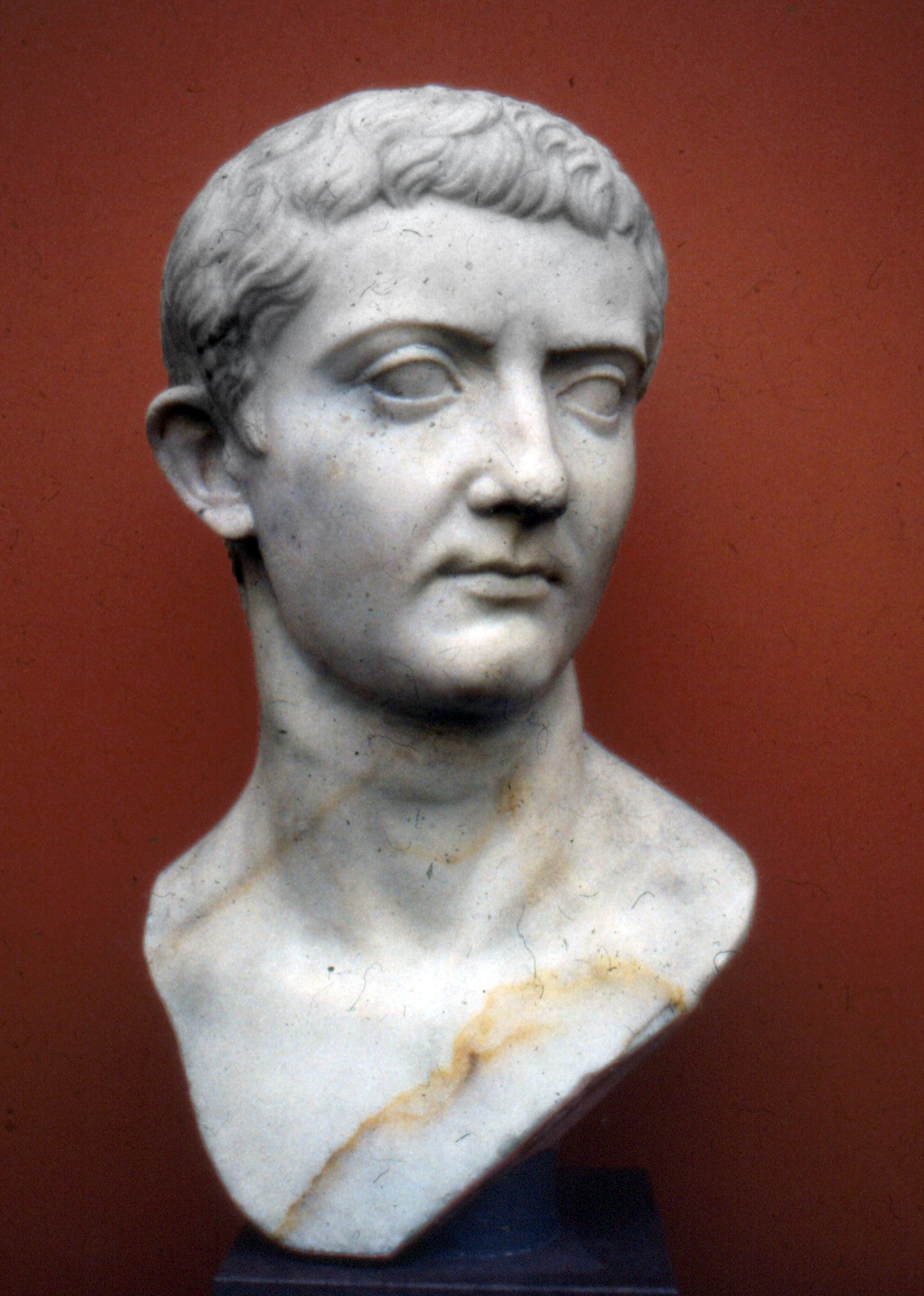|
Curtius Atticus
Curtius Atticus was a wealthy '' eques'' of ancient Rome who was one of the few companions whom the Roman emperor Tiberius took with him when he retired from Rome to Capreae in 26 CE. We know relatively little of him except that, six years later, in 32 CE, Atticus fell a victim to the machinations of Sejanus, obsessed with controlling those who had access to Tiberius, said to be operating under the "advisement" of Julius Marinus. He was supposed by German classical scholar Justus Hermann Lipsius to be the same as the Atticus to whom two of Ovid's ''Epistulae ex Ponto'' are addressed.Ovid, ''Epistulae ex Ponto ''Epistulae ex Ponto'' (''Letters from the Black Sea'') is a work of Ovid, in four books. It is a collection of letters describing Ovid's exile in Tomis (modern-day Constanța) written in elegiac couplets and addressed to his wife and friends. The ...'' 2.4, 7 References {{DEFAULTSORT:Curtius Atticus Ancient Roman equites 32 deaths 1st-century Romans Curtii ... [...More Info...] [...Related Items...] OR: [Wikipedia] [Google] [Baidu] |
Equites
The (; , though sometimes referred to as " knights" in English) constituted the second of the property/social-based classes of ancient Rome, ranking below the senatorial class. A member of the equestrian order was known as an (). Description During the Roman Kingdom and the first century of the Roman Republic, legionary cavalry was recruited exclusively from the ranks of the patricians, who were expected to provide six (hundreds) of cavalry (300 horses for each consular legion). Around 400BC, 12 more of cavalry were established and these included non-patricians (plebeians). Around 300 BC the Samnite Wars obliged Rome to double the normal annual military levy from two to four legions, doubling the cavalry levy from 600 to 1,200 horses. Legionary cavalry started to recruit wealthier citizens from outside the 18 . These new recruits came from the first class of commoners in the Centuriate Assembly organisation, and were not granted the same privileges. By the time of t ... [...More Info...] [...Related Items...] OR: [Wikipedia] [Google] [Baidu] |
Clarendon Press
Oxford University Press (OUP) is the publishing house of the University of Oxford. It is the largest university press in the world. Its first book was printed in Oxford in 1478, with the Press officially granted the legal right to print books by decree in 1586. It is the second-oldest university press after Cambridge University Press, which was founded in 1534. It is a department of the University of Oxford. It is governed by a group of 15 academics, the Delegates of the Press, appointed by the vice-chancellor of the University of Oxford. The Delegates of the Press are led by the Secretary to the Delegates, who serves as OUP's chief executive and as its major representative on other university bodies. Oxford University Press has had a similar governance structure since the 17th century. The press is located on Walton Street, Oxford, opposite Somerville College, in the inner suburb of Jericho. For the last 400 years, OUP has focused primarily on the publication of pedagogic ... [...More Info...] [...Related Items...] OR: [Wikipedia] [Google] [Baidu] |
32 Deaths
3 (three) is a number, numeral and digit. It is the natural number following 2 and preceding 4, and is the smallest odd prime number and the only prime preceding a square number. It has religious and cultural significance in many societies. Evolution of the Arabic digit The use of three lines to denote the number 3 occurred in many writing systems, including some (like Roman and Chinese numerals) that are still in use. That was also the original representation of 3 in the Brahmic (Indian) numerical notation, its earliest forms aligned vertically. However, during the Gupta Empire the sign was modified by the addition of a curve on each line. The Nāgarī script rotated the lines clockwise, so they appeared horizontally, and ended each line with a short downward stroke on the right. In cursive script, the three strokes were eventually connected to form a glyph resembling a with an additional stroke at the bottom: ३. The Indian digits spread to the Caliphate in the 9th ... [...More Info...] [...Related Items...] OR: [Wikipedia] [Google] [Baidu] |
Ancient Roman Equites
Ancient history is a time period from the beginning of writing and recorded human history through late antiquity. The span of recorded history is roughly 5,000 years, beginning with the development of Sumerian cuneiform script. Ancient history covers all continents inhabited by humans in the period 3000 BCAD 500, ending with the expansion of Islam in late antiquity. The three-age system periodises ancient history into the Stone Age, the Bronze Age, and the Iron Age, with recorded history generally considered to begin with the Bronze Age. The start and end of the three ages vary between world regions. In many regions the Bronze Age is generally considered to begin a few centuries prior to 3000 BC, while the end of the Iron Age varies from the early first millennium BC in some regions to the late first millennium AD in others. During the time period of ancient history, the world population was exponentially increasing due to the Neolithic Revolution, which was in full prog ... [...More Info...] [...Related Items...] OR: [Wikipedia] [Google] [Baidu] |
Epistulae Ex Ponto
''Epistulae ex Ponto'' (''Letters from the Black Sea'') is a work of Ovid, in four books. It is a collection of letters describing Ovid's exile in Tomis (modern-day Constanța) written in elegiac couplets and addressed to his wife and friends. The first three books were composed between AD 12 and 13, according to the general academic consensus: "none of these elegies contains references to events falling outside that time span". The fourth book is believed to have been published posthumously. The poems The themes of the letters are similar to those of ''Tristia''. Ovid writes to his wife and friends about the grimness of his exile, his deteriorating state of health and the future of his literary works. A recurring request to Ovid's named addressees in ''Epistulae ex Ponto'' remains his desire for a change of location from Tomis, which he repeatedly describes as "a town located in a war-stricken cultural wasteland on the remotest margins of empire". Recent scholarship has repeate ... [...More Info...] [...Related Items...] OR: [Wikipedia] [Google] [Baidu] |
Ovid
Publius Ovidius Naso (; 20 March 43 BC – AD 17/18), known in English as Ovid ( ), was a Augustan literature (ancient Rome), Roman poet who lived during the reign of Augustus. He was a younger contemporary of Virgil and Horace, with whom he is often ranked as one of the three Western canon, canonical poets of Latin literature. The Roman Empire, Imperial scholar Quintilian considered him the last of the Latin love elegy, elegists.Quint. ''Inst.'' 10.1.93 Although Ovid enjoyed enormous popularity during his lifetime, the emperor Augustus Exile of Ovid, exiled him to Constanța, Tomis, the capital of the newly-organised province of Moesia, on the Black Sea, where he remained for the last nine or ten years of his life. Ovid himself attributed his banishment to a "poem and a mistake", but his reluctance to disclose specifics has resulted in much speculation among scholars. Ovid is most famous for the ''Metamorphoses'', a continuous mythological narrative in fifteen books written in ... [...More Info...] [...Related Items...] OR: [Wikipedia] [Google] [Baidu] |
Justus Hermann Lipsius
Justus Hermann Lipsius (9 May 1834, Leipzig – 5 September 1920, Leipzig) was a German classical philologist. He was the brother of theologian Richard Adelbert Lipsius. He studied theology and philology at the University of Leipzig (1850–1856), where he later served as an associate professor (1869-1877) and full professor (1877-1914) of classical philology. In 1891/92 he was university rector. Biographical sketch He was editor of (1888) and of , "''De corona oratio''" (1884), reviser of [...More Info...] [...Related Items...] OR: [Wikipedia] [Google] [Baidu] |
Taylor & Francis
Taylor & Francis Group is an international company originating in the United Kingdom that publishes books and academic journals. Its parts include Taylor & Francis, CRC Press, Routledge, F1000 (publisher), F1000 Research and Dovepress. It is a division of Informa, a United Kingdom-based publisher and conference company. Overview Founding The company was founded in 1852 when William Francis (chemist), William Francis joined Richard Taylor (editor), Richard Taylor in his publishing business. Taylor had founded his company in 1798. Their subjects covered agriculture, chemistry, education, engineering, geography, law, mathematics, medicine, and social sciences. Publications included the ''Philosophical Magazine''. Francis's son, Richard Taunton Francis (1883–1930), was sole partner in the firm from 1917 to 1930. Acquisitions and mergers In 1965, Taylor & Francis launched Wykeham Publications and began book publishing. T&F acquired Hemisphere Publishing in 1988, and the compa ... [...More Info...] [...Related Items...] OR: [Wikipedia] [Google] [Baidu] |
Annals (Tacitus)
The ''Annals'' () by Roman historian and senator Tacitus is a history of the Roman Empire from the reign of Tiberius to that of Nero, the years AD 14–68. The ''Annals'' are an important source for modern understanding of the history of the Roman Empire during the 1st century AD. Tacitus' final work, modern historians generally consider it his magnum opus which historian Ronald Mellor says represents the "pinnacle of Roman historical writing". Tacitus' ''Histories'' and ''Annals'' together amounted to 30 books, although some scholars disagree about which work to assign some books to, traditionally 14 are assigned to ''Histories'' and 16 to ''Annals''. Of the 30 books referred to by Jerome about half have survived. Modern scholars believe that as a Roman senator, Tacitus had access to '' Acta Senatus''—the Roman senate's records—which provided a solid basis for his work. Although Tacitus refers to part of his work as "my annals", the title of the work ''Annals'' used tod ... [...More Info...] [...Related Items...] OR: [Wikipedia] [Google] [Baidu] |
Ancient Rome
In modern historiography, ancient Rome is the Roman people, Roman civilisation from the founding of Rome, founding of the Italian city of Rome in the 8th century BC to the Fall of the Western Roman Empire, collapse of the Western Roman Empire in the 5th century AD. It encompasses the Roman Kingdom (753–509 BC), the Roman Republic (50927 BC), and the Roman Empire (27 BC476 AD) until the fall of the western empire. Ancient Rome began as an Italic peoples, Italic settlement, traditionally dated to 753 BC, beside the River Tiber in the Italian peninsula. The settlement grew into the city and polity of Rome, and came to control its neighbours through a combination of treaties and military strength. It eventually controlled the Italian Peninsula, assimilating the Greece, Greek culture of southern Italy (Magna Graecia) and the Etruscans, Etruscan culture, and then became the dominant power in the Mediterranean region and parts of Europe. At its hei ... [...More Info...] [...Related Items...] OR: [Wikipedia] [Google] [Baidu] |
Tacitus
Publius Cornelius Tacitus, known simply as Tacitus ( , ; – ), was a Roman historian and politician. Tacitus is widely regarded as one of the greatest Roman historians by modern scholars. Tacitus’ two major historical works, ''Annals'' (Latin: ) and the ''Histories'' (Latin: ), originally formed a continuous narrative of the Roman Empire from the death of Augustus (14 AD) to the end of Domitian’s reign (96 AD). The surviving portions of the Annals focus on the reigns of Tiberius, Claudius, Nero, and those who reigned in the Year of the Four Emperors (69 AD). Tacitus's other writings discuss oratory (in dialogue format, see ), Germania (in ''De origine et situ Germanorum''), and the life of his father-in-law, Agricola (the general responsible for much of the Roman conquest of Britain), mainly focusing on his campaign in Britannia ('' De vita et moribus Iulii Agricolae''). Tacitus's ''Histories'' offers insights into Roman attitudes towards Jews, ... [...More Info...] [...Related Items...] OR: [Wikipedia] [Google] [Baidu] |
Sejanus
Lucius Aelius Sejanus ( – 18 October AD 31), commonly known as Sejanus (), was a Roman soldier and confidant of the Roman Emperor Tiberius. Of the Equites class by birth, Sejanus rose to power as prefect of the Praetorian Guard, the imperial bodyguard, of which he was commander from AD 14 until his execution for treason in AD 31. While the Praetorian Guard was formally established under Emperor Augustus, Sejanus introduced a number of reforms which saw the unit evolve beyond a mere bodyguard into a powerful and influential branch of the government involved in public security, civil administration and ultimately political intercession; these changes had a lasting impact on the course of the Principate. During the 20s, Sejanus gradually accumulated power by consolidating his influence over Tiberius and eliminating potential political opponents, including the emperor's son Drusus Julius Caesar. When Tiberius withdrew to Capri in AD 26, Sejanus was left in control of the admin ... [...More Info...] [...Related Items...] OR: [Wikipedia] [Google] [Baidu] |









